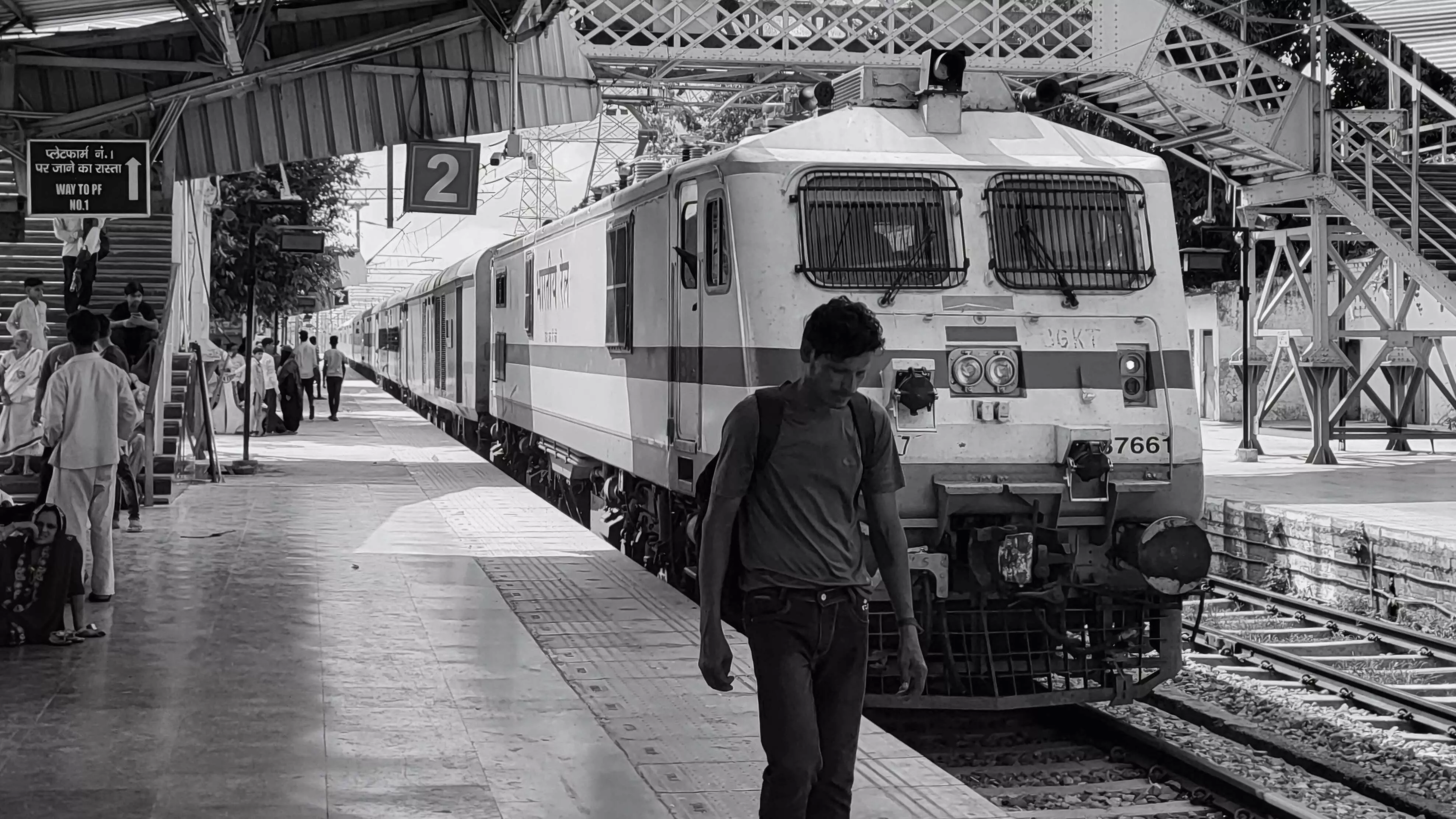Safer tracks, smarter trains
Indian Railways has achieved remarkable safety improvements through modern technology, training, and infrastructure upgrades, reducing accidents significantly while managing the world’s largest passenger network and setting global safety benchmarks

Indians are now safer on the railways than ever before, thanks to well-thought-out initiatives over the past decade delivering significant results. This achievement is particularly commendable given that no other country transports more people by rail than India, which handles over 1 lakh crore Passenger Kilometres (PKM) and approximately 685 crore passengers annually. The feat is unparalleled, even by China, which, despite its more extensive rail network and comparable population, transports only around 300 crore passengers annually.
The remarkable improvements in safety are evidenced by a steep decline in consequential train accidents—a key metric for serious incidents—from 473 in 2000-01 to just 40 in 2023-24. This progress is the result of focused efforts such as track improvements, the elimination of unmanned level crossings, regular bridge health monitoring, and the digitisation of stations, among other initiatives.
These achievements become even more impressive considering the scale involved. On an average day, over 2 crore passengers travel across India’s 70,000 Route Kilometre (RKM) network, a number that rises to 3 crore daily during peak seasons, setting yet another world record.
While zero accidents is the ideal for any railway system, no major network has achieved this. For instance, Australian Railways, with only a quarter of the Indian Railways (IR) network, recorded 52 derailments in fiscal 2022-23. Similarly, the USA’s 2,60,000 track kilometre (TKM) network, nearly double that of IR, registered 1,300 derailments, while the European Union’s 2,00,000 TKM network (1.5 times IR) saw 1,568 accidents in 2022. By comparison, IR recorded just 137 derailments in 2022-23.
These numbers highlight the stellar safety performance of IR, achieved despite years of sub-optimal capital expenditure, red tape, politicisation, and corruption. However, the legacy of past inefficiencies cannot be entirely overcome in just a few terms of good governance. Unlike many rail systems abroad that segregate passenger and freight trains, India’s mixed-traffic model increases the risk to passenger safety in the event of an accident.
Addressing the root causes of accidents and achieving a derailment-free railway network is a critical priority. This will require significant technological advancements to reduce human error and enhance systemic reliability. To this end, over Rs 1 lakh crore was invested in safety-related projects in 2023-24, with even higher spending planned for the current fiscal year.
The Number of Accidents per Million Train Kilometres (APMTK), a key index of railway safety performance, has dropped from 0.65 in 2000-01 to 0.03 in 2023-24. This commendable improvement is the result of modern track maintenance and renewal machines, better detection of track flaws, stricter controls on rail weld failures, and advanced technologies to minimise human errors.
A mix of technological interventions and targeted training has been adopted to sustain and improve these outcomes. The deployment of modern track maintenance machines has increased from 700 in 2013-14 to 1,667 this year, enhancing track upkeep. Rail grinding is now implemented across the entire network to further improve asset reliability.
Continuous track patrolling is conducted to deter miscreant activities and address issues like vandalism, track tampering, and placing foreign objects on the tracks, all of which pose serious safety risks to train operations. A cornerstone of the safety initiative is the increased use of GPS-based Fog Pass devices by loco pilots to navigate fog-prone areas with poor visibility. The number of such devices has risen from just 90 in 2014-15 to 21,742 today.
Vigilance Control Devices (VCDs), designed to boost pilot alertness, have been installed in all locomotives, increasing from less than 10,000 in 2013-14 to 16,021 currently. Advanced signalling systems, such as Panel Interlocking, Route Relay Interlocking, and Electronic Interlocking, have been implemented at over 99 per cent of the 6,637 stations on broad-gauge routes.
Additionally, loco pilots now undergo simulator-based training to enhance driving skills and reaction times, while frontline staff receive fire-fighting training. In total, over 6 lakh railway employees underwent various forms of training—including initial, promotional, refresher, and specialised programmes—during 2023-24.
Beyond human safety, Indian Railways is addressing wildlife and livestock protection by erecting 6,433 kilometres of fencing along tracks in 2024-25, with 1,396 kilometres completed as of August 2024, significantly reducing cattle collisions on these routes.
To supplement these measures, there has been a transition to safer Linke-Hofmann-Busch (LHB) coaches, which feature superior crash-worthy designs that reduce the likelihood of derailments and injuries.
While these initiatives are laudable, the government must ensure its efforts to enhance travel safety do not lose momentum. Indian Railways is already the most secure mode of transport, and with sustained focus, it will become even safer in the future.
The writer is retired Ex-Officio Secretary, Government of India. Views expressed are personal



